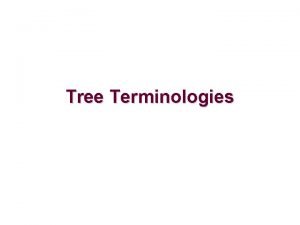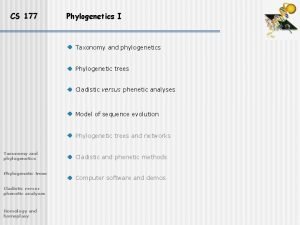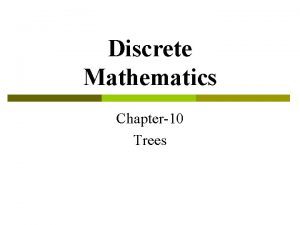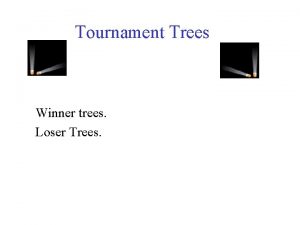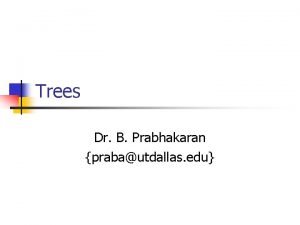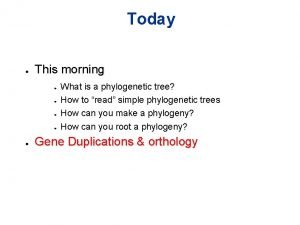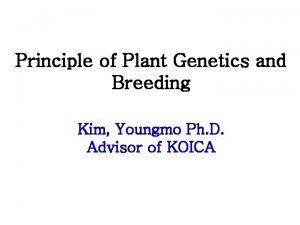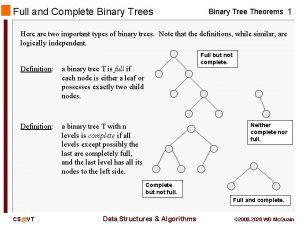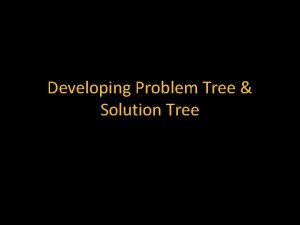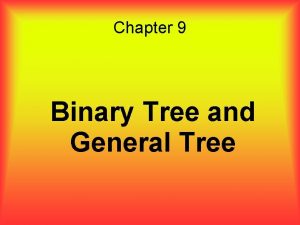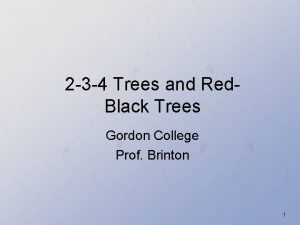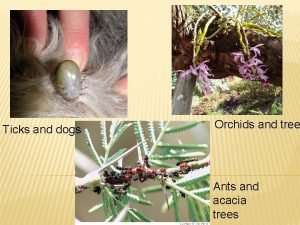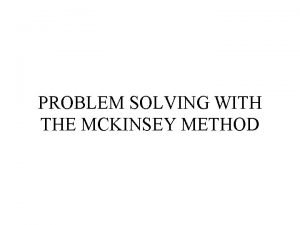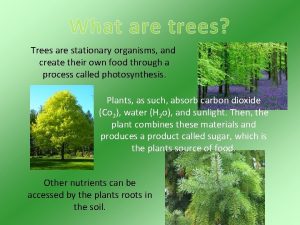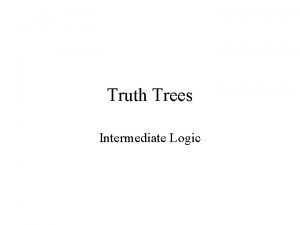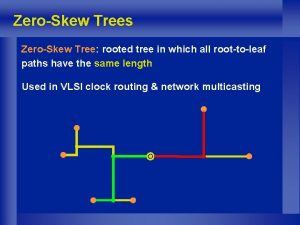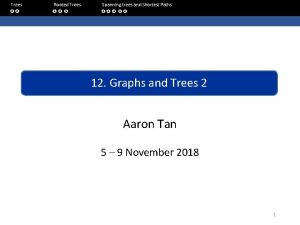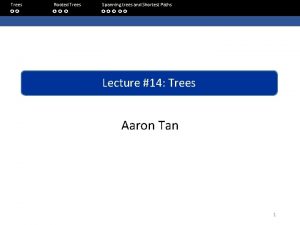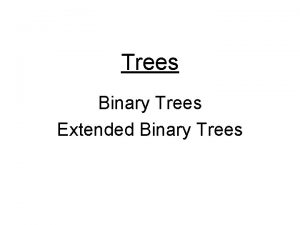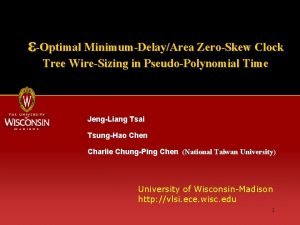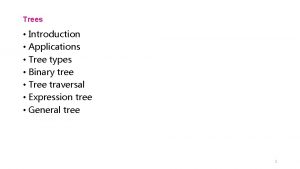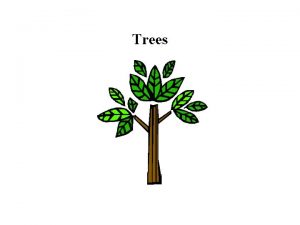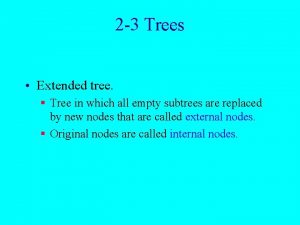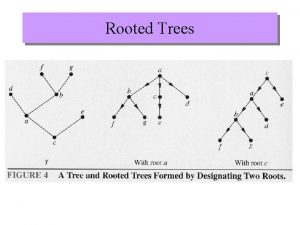ZeroSkew Trees ZeroSkew Tree rooted tree in which































- Slides: 31

Zero-Skew Trees Zero-Skew Tree: rooted tree in which all root-to-leaf paths have the same length Used in VLSI clock routing & network multicasting

The Zero-Skew Tree Problem Given: set of terminals in rectilinear plane Find: zero-skew tree with minimum total length Previous results [CKKRST 99] • NP-hard for general metric spaces • factor 2 e ~ 5. 44 approximation Our results: • factor 4 approximation for general metric spaces • factor 3 approximation for rectilinear plane

ZST Lower-Bound (CKKRST 99) N(r)=min. # of balls of radius r that cover all sinks

ZST Lower-Bound (CKKRST 99) N(r)=min. # of balls of radius r that cover all sinks

ZST Lower-Bound (CKKRST 99) N(r)=min. # of balls of radius r that cover all sinks

ZST Lower-Bound (CKKRST 99) N(r)=min. # of balls of radius r that cover all sinks

ZST Lower-Bound (CKKRST 99) N(r)=min. # of balls of radius r that cover all sinks

Constructive Lower-Bound Computing N(r) is NP-hard, but … Lemma: For any ordering then of the terminals, if

Constructive Lower-Bound n n-1 N(r) 2 r

Stretching Rooted Spanning Trees • ZST root = spanning tree root • ZST root-to-leaf path length = where = max path length from to a leaf of

Stretching Rooted Spanning Trees Loop length =

Stretching Rooted Spanning Trees Sum of loop lengths =

Zero-Skew Spanning Tree Problem Theorem: Every rooted spanning tree stretched to a ZST of total length can be where Zero-Skew Spanning Tree Problem: Find rooted spanning tree minimizing

How good are the MST and Min-Star? MST: min length, huge delay N-1 N-2 Star: min delay, huge length … . . . 3 2 1 … 0

The Rooted-Kruskal Algorithm • Initially each terminal is a rooted tree; d(t)=0 for all t • While 2 roots remain: • Pick closest two roots, t & t’, where d(t) d(t’) • t’ becomes child of t, root of merged tree is t • d(t) max{ d(t), d(t’) + dist(t , t’) } t’ t

The Rooted-Kruskal Algorithm • Initially each terminal is a rooted tree; d(t)=0 for all t • While 2 roots remain: • Pick closest two roots, t & t’, where d(t) d(t’) • t’ becomes child of t, root of merged tree is t • d(t) max{ d(t), d(t’) + dist(t , t’) }

How good is Rooted-Kruskal? • Initially each terminal is a rooted tree; d(t)=0 for all t • While 2 roots remain: • Pick closest two roots, t & t’, where d(t) d(t’) • t’ becomes child of t, root of merged tree is t • d(t) max{ d(t), d(t’) + dist(t , t’) } Lemma: delay(T) length(T) At the end of the algorithm, d(t)=delay (t ) T When edge (t , t’) is added to T: • length(T) increases by dist(t , t’) • delay(T) increases by at most dist(t , t’)

How good is Rooted-Kruskal? • Initially each terminal is a rooted tree; d(t)=0 for all t • While 2 roots remain: • Pick closest two roots, t & t’, where d(t) d(t’) • t’ becomes child of t, root of merged tree is t • d(t) max{ d(t), d(t’) + dist(t , t’) } Lemma: length(T) 2 OPT Number terminals in reverse order of becoming non-roots length(T) =

Factor 4 Approximation Algorithm: Rooted-Kruskal + Stretching • Length after stretching = length(T) + delay(T) • delay(T) length(T) • length(T) 2 OPT ZST length 4 OPT

Stretching Using Steiner Points

Factor 3 Approximation Algorithm: Rooted-Kruskal + Improved Stretching • Length after stretching = length(T) + ½ delay(T) • delay(T) length(T) • length(T) 2 OPT ZST length 3 OPT

Practical Considerations • For a fixed topology, minimum length ZST can be found in linear time using the Deferred Merge Embedding (DME) algorithm [Eda 91, BK 92, CHH 92] • Practical algo: Rooted-Kruskal + Stretching + DME Theorem: Both stretching algorithms lead to the same ZST topology when applied to the Rooted. Kruskal tree

Running Time • Stretching: O(N log. N) • Rooted-Kruskal: O(N log. N) using the dynamic closest-pair data structure of [B 98] • DME: O(N) [Eda 91, BK 92, CHH 92] O(N log. N) overall

Extension to Other Metric Spaces Everything works as in rectilinear plane, except: • Running time of Rooted-Kruskal becomes O(N 2) • No equivalent of DME known for other spaces • The space must be metrically convex to apply second stretching algorithm

Bounded-Skew Trees b-bounded-skew tree: difference between length of any two root-to-leaf paths is at most b Bounded-Skew Tree Problem: given a set of terminals and bound b>0, find a b-bounded-skew tree with minimum total length Previous approximation guarantees [CKKRST 99]: • factor 16. 11 for arbitrary metrics • factor 12. 53 for rectilinear plane Our results: factor 14, resp. 9 approximation

BST construction idea + lower bound Two stage BST construction: • Cover terminals by disjoint b-bounded-skew trees • Connect roots via a zero-skew tree Lemma: For any set of terminals, and any

Constructing the tree cover • T MST on terminals, rooted arbitrarily • While T do: • Find leaf of T furthest from the root • Find its highest ancestor u that still has delay b • Add u to W • Add T u to the tree cover and delete it from T Lemma:

BST Approximation Algorithm: Output tree cover approximate ZST on W

BST Approximation Theorem: Rectilinear Plane: Arbitrary metric spaces:

Summary of Results Problem Metric Zero-Skew General Previous 5. 44 factor New factor Rectilinear 4 3 Bounded-skew General Rectilinear 16. 11 12. 53 14 9

Open Problems • Complexity of ZST problem in rectilinear plane • Complexity of finding the spanning tree with minimum length+delay? • Zero-skew Steiner ratio: supremum, over all sets of terminals, of the ratio between minimum ZST length and minimum spanning tree length+delay • What is the ratio for rectilinear plane? • What is the ratio for arbitrary spaces? ( 4, 3) • Planar ZST / BST
 Sister taxon
Sister taxon Phenetics vs cladistics
Phenetics vs cladistics What is rooted tree in discrete mathematics
What is rooted tree in discrete mathematics The truman doctrine was rooted in the idea of
The truman doctrine was rooted in the idea of Consumer rooted segmentation bases
Consumer rooted segmentation bases Three market segmentation strategies
Three market segmentation strategies Usage situation segmentation
Usage situation segmentation 2. 'foresight is deeply rooted within intuitive mind.'
2. 'foresight is deeply rooted within intuitive mind.' Winner tree and loser trees
Winner tree and loser trees Selection trees
Selection trees Loser tree
Loser tree Which of the following graphs are trees
Which of the following graphs are trees Gene tree vs phylogenetic tree
Gene tree vs phylogenetic tree Foragry
Foragry Complete binary tree vs full binary tree
Complete binary tree vs full binary tree Problem solution tree
Problem solution tree General tree to binary tree
General tree to binary tree Threaded binary tree
Threaded binary tree Red black tree to 2-3-4 tree
Red black tree to 2-3-4 tree The kite runner imagery
The kite runner imagery Bwtree
Bwtree Objective tree analysis example
Objective tree analysis example Problem tree and objective tree
Problem tree and objective tree H-tree clock tree synthesis
H-tree clock tree synthesis Parse tree vs syntax tree
Parse tree vs syntax tree Ticks and dog relationship
Ticks and dog relationship Mckinsey problem solving
Mckinsey problem solving A person weighing 600 n gets on an elevator
A person weighing 600 n gets on an elevator Is a tree unicellular or multicellular
Is a tree unicellular or multicellular Dichotomous key to the conifers
Dichotomous key to the conifers Why monkeys live in trees
Why monkeys live in trees Which of the truth-tree rules are branching rules
Which of the truth-tree rules are branching rules
